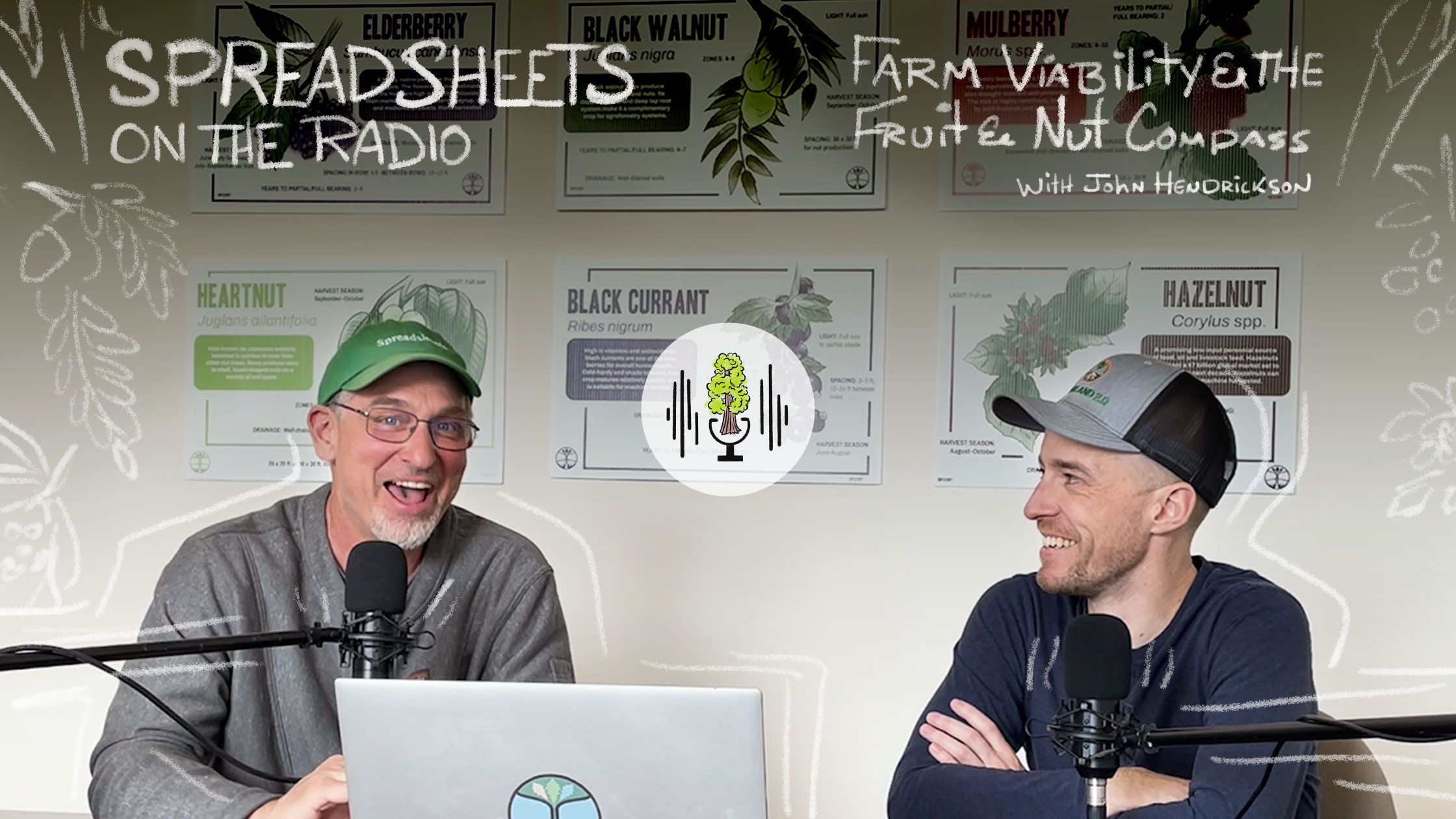John Hendrickson is a former vegetable farmer and a professional spreadsheet wizard. He even showed up to record an interview for the Perennial AF podcast wearing a special hat that said “Spreadsheets” across the front! John has developed a series of Excel-based tools to help farmers understand the financial viability of their various on-farm enterprises, including the Fruit and Nut Compass, which was developed in partnership with the Savanna Institute.
John helped host Jacob Grace download and start using the Fruit and Nut Compass, and talked through some key considerations for maintaining profitable farm enterprises. This “spreadsheets on the radio” episode is intended to help you think about the financial side of your perennial enterprises, and introduce you to a helpful tool that can point your way to profitability.
Transcript has been edited for brevity and clarity.
Jacob Grace: It says, “The Fruit and Nut Compass is a farm business planning tool to help both new and experienced producers project the financial costs and returns from an enterprise focused on perennial crops. It is available as a free, downloadable Excel file. The fruit and nut campus is very different than a standard crop enterprise budget, because it enables a person to examine the complete costs and expected returns of up to 12 crops simultaneously, as part of an integrated farm plan over a 15 year time period. It does not include any assumptions about crops, yields, costs or selling prices. Those are all data entry tasks for the user. The main question this tool helps the user answer is, ‘how deep a financial hole will I be digging? And when might my perennial crop farm become profitable?’”
John Hendrickson: That’s really the key – that’s what this tool is designed to do. And it actually includes this really cool graph page at the end of the tool that shows you that pictorially. Here’s the hole that I’m digging as I’m investing in trees and irrigation and whatever. And then here I’m breaking even. And then hopefully, you know, the numbers look better and better as the years go by.
Jacob Grace: Thinking about farm viability, how many separate farm enterprises do you think is too many? You’ve built the fruit and nut compass to have up to 12 different crops… In your experience, how many is too many?
John Hendrickson: Boy, I don’t think it’s fair to put a number on that, because I think there’s a big difference between different types of enterprises. And it also kind of depends on how you’re defining “enterprise”. Because if you’re raising pork, that’s not enterprise. It’s not an enterprise until you sell it. And if you set up a booth at the farmers market, unless you have something on your table, that’s also not an enterprise. So you have to have something and you have to have a place to sell it. That’s an enterprise in my mind.
Most farms go through a period of enterprise expansion and then in a phase of enterprise contraction where they realize, “oh, I don’t really have a market for this or I don’t really like growing this or you know, the yields are too variable”. So, I don’t feel it’s right to put a number to it. But I think it’s more than one. And ideally, probably less than ten.
Links
All of John’s compass tools: https://cias.wisc.edu/our-work/farming-systems/farm-viability/
Fruit and Nut Compass: https://cias.wisc.edu/our-work/farming-systems/farm-viability/fruit-nut-compass/
Derek Sivers quote: https://sive.rs/balance

